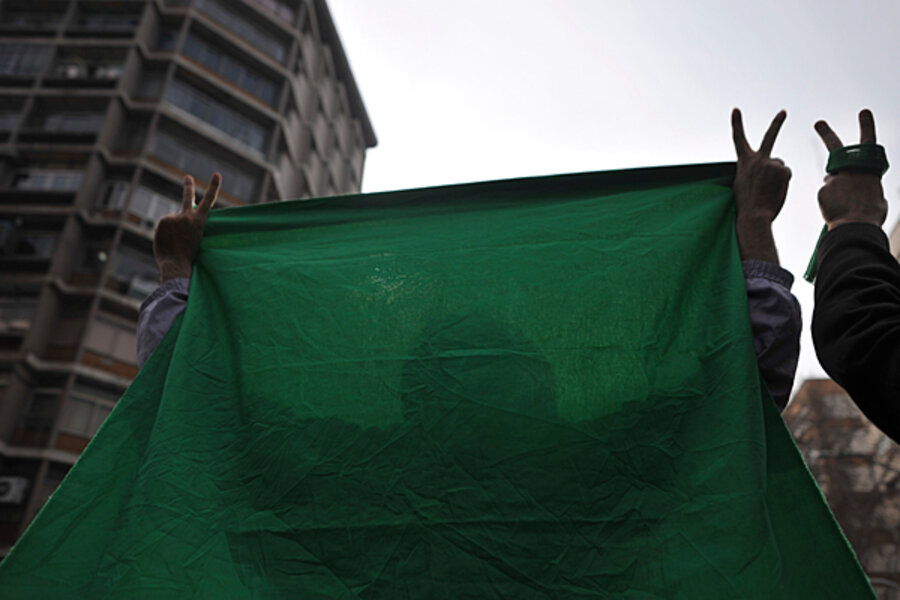Iran Green Movement promising big February protests
| Istanbul
Opposition Green Movement activists in major cities around Iran are playing a cat-and-mouse game with authorities seeking to shut down their operations ahead of Feb. 11, a revolutionary anniversary that the activists are hoping to use for the country's largest street protests yet..
“The whole future ... is at stake,” said Shahab Mousavvat, a London-based exile who used to work for the state-run broadcaster Press TV. “Incremental actions are planned from the 1st through the 11th of February.” Feb. 11, 1979, was the culmination of the Islamic Revolution that overthrew Iran's then-monarch, Shah Reza Pahlavi.
Demonstrators communicating via e-mail and cellphone are planning a week of “civil resistance." Since Monday, organizers have been seeking Green Movement supporters through SMS messages, patriotic video clips posted on the Internet, and slogans daubed on walls.
They're encouraging residents of large cities to shout “Allahu Akbar" from rooftops, and are planning a series of protest marches leading up to Feb. 11, when a major pro-government march is planned. Opposition activists say they intend to infiltrate that pro-government march in large numbers. Once in Tehran's Azadi Square, where state broadcaster cameras will be rolling, they plan to whip out protest banners and transform the crowd into a sea of green.
“Iran is in lockdown at the moment,” said Afshin Parvaresh, an exiled journalist living in Turkey. “The Internet and cellphone networks are highly monitored.”
Students are planning separate protests on university campuses in neighborhoods whose residents showed themselves broadly sympathetic to the opposition in past confrontations by taking in students and sheltering them.
“They’re gearing up for nonviolent guerrilla warfare,” said Shahram Kholdi, a lecturer in Middle East Studies and Persian at Britain’s Manchester University. “They’re no longer centralized so they can’t be shut down so easily.”
Officials warn of no leniency
Police General Ismail Ahmad Moghaddam warned protesters that his forces would no longer show “leniency ... we will take severe action. The era of tolerance is over. Anyone attending such rallies will be crushed.”
One opposition leader, Mohsen Sazegara, who is based in the United States, has been putting out daily 10-minute video clips in which he discusses issues of the day and answers questions forwarded from Iran.
The regime has responded by increasing its surveillance of cellphone and Internet networks. The government has also issued photographs of protesters and asked the public to identify them.
“A lot of people have been arrested, other organizers have gone underground and everybody’s preparing for the anniversary of the day Khomeini returned to Iran,” said Mr. Kholdi, referring to the first day of the so-called Ten Day Dawn period that culminated in the overthrow of the Shah.
Within the regime, there are disputes over whether to crush the protesters violently, analysts say.
“There’s a powerful minority caucus who are advising Ahmadinejad to unleash the full force at his disposal on the people,” said Mousavvat. “Hitherto, they’ve been checked by more moderate voices, who are terrified by what the failure of such a strategy would represent.”
Opposition activists are debating whether pro-opposition members of small communities should go to Tehran to participate in the demonstration or stay at home. Those in favor argue that activists’ hands are tied in small communities where security forces can easily identify them, while others insist that to make this a truly national movement and stretch the security forces, provincial actions must be initiated, too.
“Aside from Tehran and two, three other large cities, there’s not much going on,” said Soroush, a student in the port city of Bandar Abbas on the Persian Gulf. “It’s possible that many are against the system but they’ll never do something about this.”





